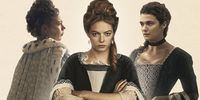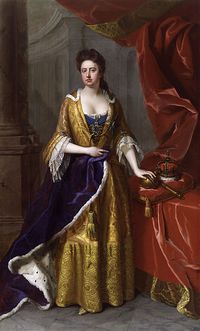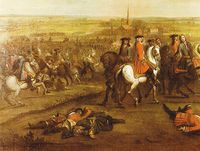How accurate is the movie The Favourite
Contents
Introduction
The Favourite, a British made movie was one of the most critically acclaimed movies of 2018. It is a historical drama set in one of the key periods of British history. It focuses on the relationship of Queen Anne of Great Britain with two of ladies in her court, Sarah, Duchess of Marlborough and Abigail Hill. The motion picture is a darkly comic one and is in many ways not a typical historical drama. It was directed by Yorgos Lanthimos and written by Deborah Davis and Tony McNamara. Queen Anne was played by Olivia Coleman, who won an Academy Award for Best Actress, for he performance. Abigail Hill was played by Emma Stone. Sarah, Duchess of Marlborough was played by Rachel Weisz and her husband the Duke of Marlborough was played by Mark Gatis. This article will evaluate the historical accuracy of the acclaimed 2018 movie.
Historical Context
Set in the early 1700s the movie concentrates on the period of the War of the Spanish Succession (1700-1715). This was a struggle between France and Britain and their respective allies. In a series of victories, the Duke of Marlborough, a military genius, defeated the armies of the French. This war was to prove to be a key turning point in the history of Europe. As it marked the end of French expansion under Louis IV and the rise of the British Empire [1]. Despite the victories, the war was not popular in Britain, because it led to high taxes. There was a great deal of factionalism in the country and it was divided into political lines. The Tories were conservatives, who disliked the war and ideas of Empire, while the Whigs were imperialists and more liberal. Both sides sought to influence Queen Anne (1665 –1714), who had immense political power and who could appoint ministers and prorogue Parliament [2]. The movie captures very well the political passions of the time and how they led to a great deal of political in-fighting at court. However, the customs of the actors in the movies have been criticized as not being historically accurate. In the 2018 movie, Sarah (Rachel Weisz) is shown dressed in masculine attire, including breaches. This was not historically correct and if Sarah had dressed like this, it would have caused a scandal and would have resulted in her being immediately dismissed from Court.
How accurate are the characters in the movie
The characters in the movie are all based on historical figures. The central figure in the movie is Queen Anne. She became Queen after the death of her sister Mary I in 1702 and was the last of the Stuart Dynasty and had married Prince George of Denmark. In the movie, she is shown as being very ill and suffering from a number of ailments. That was true and she suffered from gout and this meant that she had to be carried around in a Sedan Chair, which meant that she was not able to take a very active part in the politics of the time. Anne was a rather tragic figure and was indeed pregnant 17 times as mentioned in the drama. She tragically had 12 miscarriages and delivered five children and only one of these made it past their second birthday. Her longest-lived child, the Prince of Gloucester, died before his 12th birthday. These tragedies profoundly affected her, and she was a deeply unhappy person. Olivia Coleman portrays the Queen as an eccentric, insecure and unstable, but this was not the case. Anne could be volatile and emotional, but she was much more stable than Coleman’s portrayal. She was a deeply religious woman, and this was crucial to her character and her reign, and this is not really shown in Lanthimos work. She opposed her father, King James II pro-Catholic policies because of her devotion to the Church of England. Moreover, she was not as foolish figure as played by Olivia Coleman but was rather a capable ruler who brought much-needed stability to her realm [3]. In many scenes, Anne is shown with rabbits whom she treats like children. In reality, the Queen did not keep rabbits as pets, and this is pure invention. Sarah, the Duchess of Marlborough is shown as an imposing and temperamental woman who is power-hungry. This representation was accurate, and she was a committed Whig. The movie does show her commitment to her husband the Duke of Marlborough, even when he was at war for years on end. Rachel Weisz does capture the character of Sarah and her indomitable spirit [4]. As shown in the movie she used her position as the favorite of Queen Anne to become very influential. The loss of the monarch’s favor resulted in her removal from court, as portrayed in the drama. Abigail Hill, later Masham was as shown in the movie a poor relative of the powerful Sarah. She was taken into her service out of kindness as described in the 2018 movie. As in the motion picture, her family had been ruined by her father’s gambling habit, but he did not sell her, after losing at a game of cards [5]. Abigail was a servant at the Court of the Queen but unlike the movie, she was not a humble maid, but a lady-in-waiting. This allowed her to come to the attention of Queen Anne. In real-life Abigail was not as bold or assertive as portrayed by Emma Stone and she was in reality, demure and even retiring. However, she did marry a court attendant called Masham as portrayed in the movie. The representation of some of the other characters is often not historically accurate. For example, the memorable Lord Harley was not a handsome young man as shown in the movie but a middle-aged man at the time of the events.
The relationship between Sarah and Anne
The movie focuses on the relationships between Anne, Sarah, and Abigail. The movie does show how influential Sarah was at the Court. She had met the future Queen in the 1660s when they were both children and Sarah had been kind and friendly to the young Royal. They were very close and even when they were parted they would communicate by letters. Sarah was some five years older than Anne and this allowed her to have a great deal of influence over the future Queen and when Anne married George of Denmark, she became Lady of the Bedchamber. In 1702, when the last of the Stuart’s was crowned Queen she appointed Sarah Mistress of the Robe, who also assumed a series of other offices. These gave her a great deal of power and she could control who had access to the Queen. Sarah was a beautiful and vivacious woman and she often dominated her Queen. She could be very brutal with her and even condescending. Sarah’s influence over Anne was crucial and instrumental in the rise of her husband the Duke of Marlborough and his prosecution of the war against France and her allies [6]. The relationship between Sarah and her monarch was largely accurate.
Abigail Hill, the Queen, and Sarah, Duchess of Marlborough
Abigail in the movie plots to become the new favorite of the Queen and therefore become one of the most influential people in the kingdom. This was not really the case, Abigail did not have to conspire against Sarah, because she had already lost much of her influence by 1708. Ann had grown tired of the Duchess and her overbearing personality and this is why she turned to Abigail, who flattered and reassured the Queen, unlike the more abrasive Sarah. There is no evidence that Abigail poisoned Sarah as shown in the motion picture which ended with her near-death and waking up in a brothel. One of the main reasons, for her fall, this, was Sarah’s arrogance and rudeness to Anne and not because of Abigail machinations. Queen Anne and Sarah had very different political views [7]. The daughter of James II was instinctively a Tory, and a conservative. The Duchess was a Whig and by the standards of her time, liberal on issues such as religious toleration, except for Catholics [8]. This led to growing conflicts between them and Anne came to resent Sarah imposing her Whig opinions on her. These political differences and the domineering character of the Duchess resulted in the rift between the Queen and her former favorite and in this regard, the movie is very inaccurate. This rather any great conspiracy by Abigail led to her elevation to the status of the Queen favorite [9].
Was there a sexual relationship between Anne, Sarah, and Abigail
The 2018 movie portrays the Queen and the Duchess of Marlborough as having a long-term sexual relationship despite the fact that they are both married. This secret relationship is the source of Sarah’s power and influence at the Royal Court. In fact, it is exceedingly unlikely that Sarah and Anne were having a lesbian affair. As noted above, Anne was a very religious woman and her faith influenced every aspect of her life. A sexual relationship with a member of the same sex in the eyes of the Anglican Church, of which Anne was a member, would have been regarded as a mortal sin, leading to eternal damnation in hell. Moreover, Anne was very devoted to her husband. The two always shared their bedroom which was unusual for a member of the elite and she was devasted when George died in 1708 [10] It cannot be denied that, once, Anne shared a very intense friendship with Sarah, and it was one of the most important in her life. However, we should not construct their relationship in modern terms. There is no evidence that Abigail was the lover of the Queen. It appears that Anne was not as dependent on her as she had been previously on Sarah. Moreover, by the time that Abigail had become her favorite, she was a very sick woman and suffering greatly from gout. Rumors about Anne’s sexuality were spread by Whig propagandists because they believe that she was too close to their hated enemies, the Tories [11]. It does seem that Sarah contributed to the rumors that the daughter of James II was a lesbian. She had anonymously circulated a poem that implied that Abigail and Anne were having a sexual affair. At the time, no one took this seriously and suspected that the Duchess was slandering the Queen out of spite. However, it does seem that Anne and Sarah’s intense friendship may have had some sexual aspect. It does appear that the Queen, at least subconsciously had urges from her friend and her chief courtier. In a series of letters, that she wrote to the wife of the Duke of Marlborough, she displays love for ‘her closest friend in a way that we would classify as romantic, though perhaps not erotic way’ [12]. After the falls from favor, it does seem that Sarah tried to revel them to embarrass the Queen, but she never did. What is clear is that the last of the Stuart Dynasty and her two favorites did not have the type of relationships that were shown in the movie[13].
Conclusion
The Favourite is a very unusual drama as it is funny and it is based on historical events, from the early 18th century. It does accurately portray the fevered political atmosphere of the time and the infighting at the court. The movie does accurately portray the character of Sarah, Duchess of Marlborough, but it gives us a caricature of Queen Anne and Abigail. The general outline of the plot is based on the fall of Sarah and how she lost her position as the Queen’s favorite. However, there were a great many exaggerations and Abagail did not poison Sarah, for example. Then the reasons for the downfall of the Duchess was not a result of the devious machinations of Abigail. She was responsible for her downfall, she was too domineering, and tried to manipulate the Queen, into following political policies that were against her deepest beliefs. The drama of the 2018 movie, revolves on a supposed sexual relationship between Anne and Sarah, and later one between the Queen and Abigail. It is highly unlikely that this occurred as portrayed and it is probably based on groundless rumors. While the movie is based on real events it distorts and misrepresents what happened and therefore, while it may be great drama, the motion picture is not historically accurate.
Further Reading
Falkner, James. The War of the Spanish Succession (Kindle ed.) (Yorkshire, Pen and Sword Military, 2015).
Gregg, Edward. Queen Anne (Revised) (The English Monarchs Series) (2001 ed.) (Yale University Press, 2004).
References
- ↑ Coward, Barry. The Stuart Age: England, 1603-1714 (London, Routledge, 2014), p. 287
- ↑ Coward, p 289
- ↑ Waller, Maureen. Sovereign Ladies: The Six Reigning Queens of England (London: John Murray, 2006), p 213
- ↑ Field, Ophelia. Sarah Churchill Duchess of Marlborough: The Queen's Favourite (London, St. Martin's Press, 2016), p 113
- ↑ Field, p 119
- ↑ Chalus, Elaine. "‘Ladies are often very good scaffoldings’: Women and Politics in the Age of Anne." Parliamentary History 28, no. 1 (2009): 150-165
- ↑ Field, p 198
- ↑ Holmes, Geoffrey. British politics in the age of Anne (Edinburg, A&C Black, 1987), p 11
- ↑ Holmes, p 78
- ↑ Green, David. Queen Anne (London: Collins, 1970), p 113
- ↑ Green, p. 201
- ↑ Field, Ophelia. "Queen Anne's Ladies." The Gay & Lesbian Review Worldwide 11, no. 3 (2004): 21
- ↑ Green, p 198



